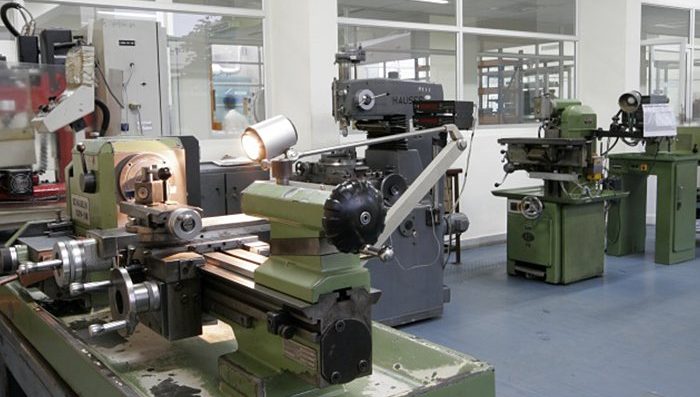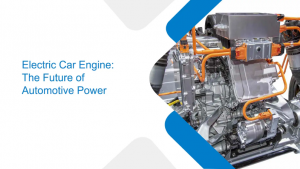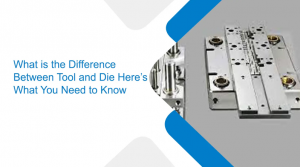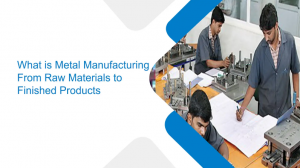Progressive Die vs. Compound Die: Differences and Advantages
- Precision Metal Stamping |
- May 24, 2022

One of the biggest dilemmas in manufacturing metal stamped products is to choose the right type of metal stamping die. Metal stamping industry is now focussing on precision metal stamping techniques owing to the growing demand of precision metal components for different industrial applications.
Therefore, choosing the right die set foundation is an important aspect of metal stamped die engineering. Improper die selection can lead to a variety of deflection-related issues, including cutting sections breaking, working die component misalignment, punches chipping and breaking, and the inability to make a qualifying part.
A proper die set is a critical component of die engineering. The two most common metal stamping die sets are progressive die and compound die. Both are metal stamping techniques that find a myriad of industrial applications. Because each product has a distinct end-use, it is critical to select a stamping die that can produce a precise product at the lowest possible cost and in the shortest amount of time.
Type of Dies
A Die is an integral part of the engineering and manufacturing process, and at Eigen, we offer six important types of Dies:
Simple Die: A simple Die is made specifically to carry out a single action during every stroke of the press sliding. Based on how it cuts and forms, the simple Die is further categorized into cutting Dies and forming Dies.
Compound Stamping Die: Compound stamping dies are made with the help of compound die design. This die is made to carry out several tasks with each press stroke and they are used for cutting operations like blanking and piercing. Due to their ability to do tasks more quickly than simple stamping dies, compound stamping dies are more appropriate for intricate or difficult jobs.
Combination Stamping Dies: Combination stamping Dies like compound stamping Dies can perform multiple tasks per stroke of a press, but the difference is that combination stamping Dies are used for both forming and cutting operations. So, they can be used for piercing, blanking, forming, and bending.
Progressive Die: It is the type of Die stamping press where the part is operated by multiple separate workstations, each of which carries out one or more distinct processes. The progressive Die diagram with high precision is designed to manufacture progressive Die at Eigen.
Transfer Die: The transfer Die operates multiple tools with a single press. The metal workpiece can be freely transferred, which allows for the insertion of additional shapes until the desired shape is achieved.
Multiple Dies: Also referred to as gang dies, multiple dies create two or more pieces with each press of the trigger. With these dies, two or more components can be produced with each press stroke by grouping several dies.
Progressive Die Stamping
Progressive die stamping is ideal for long production runs due to its high repeatability. A single machine with multiple die stations is used in this metal stamping method. Each station where a stamping operation is performed automatically moves a metal strip of stock material. The finished part must then be cut free from the strip as the final step.
Progressive stamping necessitates a shorter setup time. To ensure the accuracy of the finished products, the metal strip must be carefully set up.
Progressive die stamping automatically and continuously feeds material into the machine, allowing for longer production runs and the production of more parts in less time. As a result, progressive die stamping is ideal for producing complex components quickly and affordably while maintaining high part-to-part repeatability.
EXPLORE OUR PROGRESSIVE TOOLING SERVICES
Benefits of Progressive Die Stamping
Progressive die stamping saves time and money by performing multiple operations simultaneously. Some of the notable advantages of progressive die stamping are that it has:
- Less setup time
- Low labour costs
- Minimal scrap
- Suitable for metal parts of complex geometries.
- Can produce large quantities of small parts with tight tolerances in a short period.
Disadvantages of Progressive Dies
- High setup costs, but these produce precise products in large quantities.
- Only mass-produced products are cost-effective.
- Not recommended for Large-sized components.
To summarise, progressive die stamping can quickly, affordably, and consistently produce parts with complex geometries. Progressive die stamping, however, necessitates the purchase of permanent steel tooling.
As the base material for progressive die stamping, manufacturers have the liberty to use a variety of metals such as steel, aluminium, copper, stainless steel, and brass
Also Read- What You Need to Know About Progressive Die Stamping
Compound Die Metal Stamping
Compound die stamping is used to produce simple flat parts like washers. A metal strip is fed through the compound die, but unlike progressive or transfer die stamping, compound stamping tooling performs multiple cuts, punches, and bends in a single stroke rather than multiple strokes. For medium- to high-volume production runs, this can be cost-effective.
Speed is an important factor in compound die-stamping; however, speed is also affected by the size of the part. Large components take longer to exit the die, whereas small components exit faster. Manufacturers benefit from compound die stamping in a variety of ways.
Benefits of Compound Die Stamping:
- Tooling that is less expensive than progressive die tooling
- Production of simple and small parts is quick and efficient.
- High repeatability of single-die cases.
- One stroke result in flatter parts.
Disadvantages of Compound Dies:
- Not suitable for metal geometries with medium to high complexity.
DISCUSS YOUR PROGRESSIVE TOOLING NEEDS? CONTACT US!
In Nutshell
Both the compound die and progressive die employ one or more metal stamping operations. The number of strokes required to complete a metal stamping operation distinguishes a progressive die from a compound die.
Progressive dies require one or more strokes to create a metal stamp, depending on the complexity of the design. In contrast, compound dies complete the metal stamping operation in a single stroke.
Compound dies are a better option for the high-volume production of simple metal parts. Progressive dies are ideal for the mass production of precise medium-sized metal parts.
Also Read- Types of Progressive Tools That You Should Know About
The cost of a progressive die depends on the geometry of the metal part and is typically higher than the cost of a compound die. Steel, aluminium, copper, and titanium are all suitable metals for progressive and compound dies.
As a result, Compound die and Progressive die each have their own set of advantages and disadvantages. You can select one that complements your objectives based on the complexities of the project and its components.
Frequently Asked Questions
Ujjwal handles crucial roles like AGM Marketing, researcher, and is an author for KDDL – Eigen. He currently works with Eigen for implementing proven techniques and strategies for marketing plans on online and offline platforms. An expert in efficiently executing SEO, SEM, email marketing, social media marketing, PR marketing, Print campaigns, etc. Ujjwal has coordinated an efficient marketing team on various creative campaigns and programmatic buying to support various digital cross-promotion efforts. Implement efficient search optimization strategies with the help of collateral material and metrics.
In his former years, Ujjwal has years of experience in a managerial role for several reputed companies. His years of experience combined with the flair of writing help him come up with result oriented strategies for Eigen.




